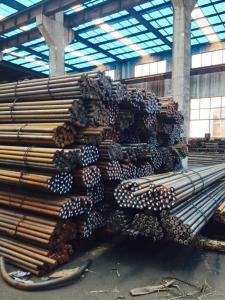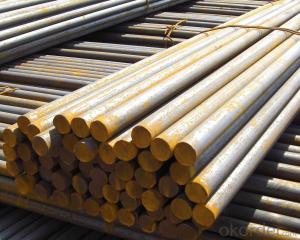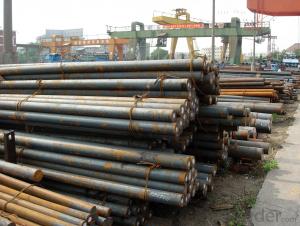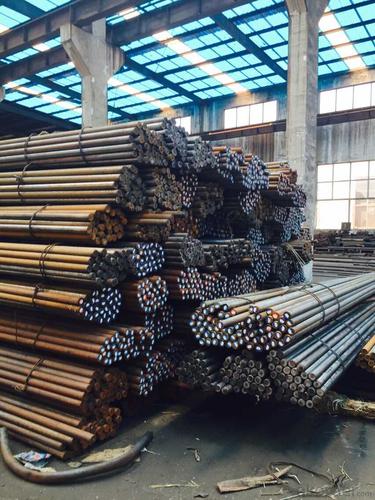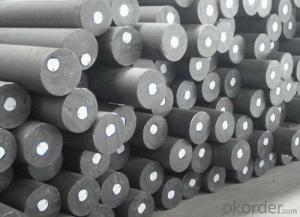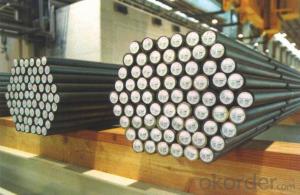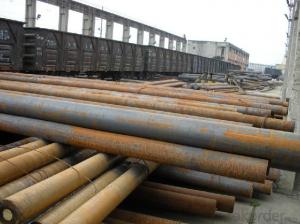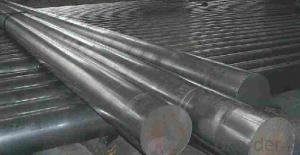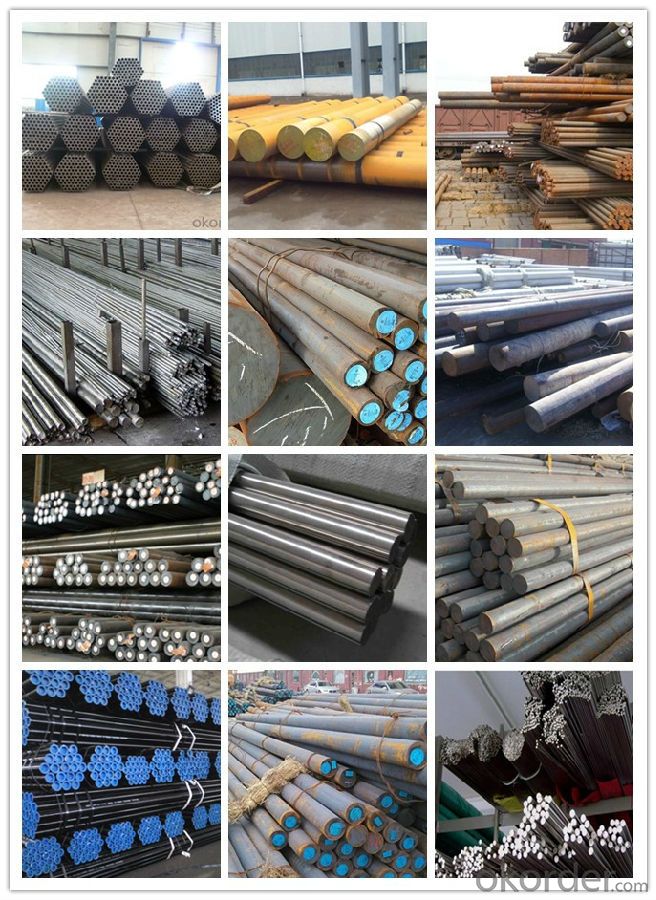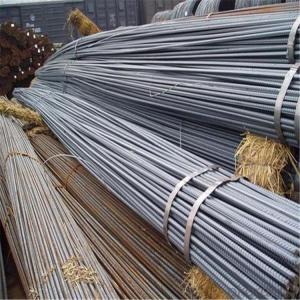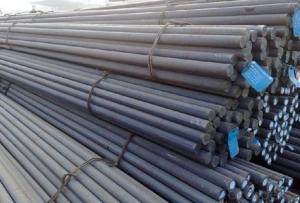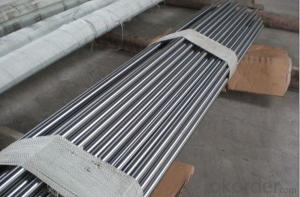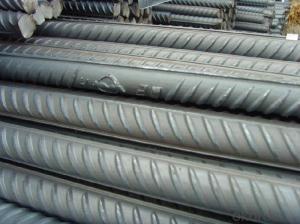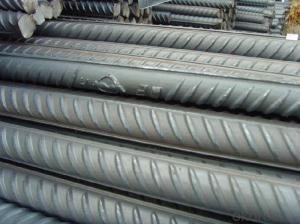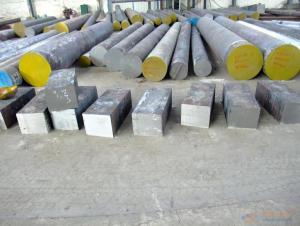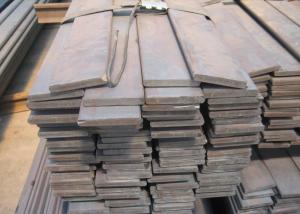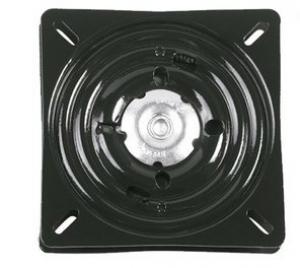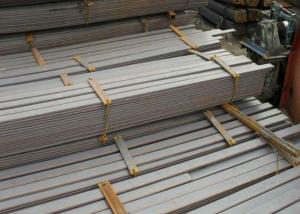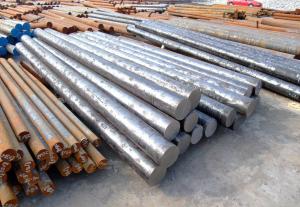Deformed Steel Bar HRB335 Construction Rebar
- Loading Port:
- China main port
- Payment Terms:
- TT or LC
- Min Order Qty:
- 30 m.t.
- Supply Capability:
- 10000 m.t./month
OKorder Service Pledge
OKorder Financial Service
You Might Also Like
Specification
Product information:
| Commodity: | High quality hot rolled ribbed bar, Steel rebar, Deformed bars, Deform rebar |
| Standard & Grade: | GB1499-98 : HRB335,HRB400,HRB500 |
| BS4449-1997 : GR460B,GRB500B | |
| CAN/CSA-G30.18-M92 : 400W | |
| AS/NZS4671-2001 : GR300E, GR500E | |
| JIS G3112-2010 : SD345,SD390,SD490 | |
| ASTM A615 : Gr.40, Gr.60 | |
| DIN488-1984 : BST500 | |
| KS D 3504 : SD400 | |
| Diameter: | 6mm - 50mm |
| Length: | 6m,9m,12m |
| Packing: | Bundle packing |
| Origin: | China |
| Application: | Construction,Road,Machinery processing,Welding fields. |
| Delivery time: | 10-25 days |
| Shipment: | By bulk vessel or Container |
| Documents: | Mill Test Certificate,Commercial Invoice,Packing List,Certificate of Origin |
Product show
Workshop show

Shipping
1. FedEx/DHL/UPS/TNT for samples, Door-to-Door;
2. By Air or by Sea for batch goods, for FCL; Airport/ Port receiving;
3. Customers specifying freight forwarders or negotiable shipping methods!
Delivery Time: 3-7 days for samples; 5-25 days for batch goods.
Payment Terms
1.Payment: T/T, L/C, Western Union, MoneyGram,PayPal; 30% deposits; 70% balance before delivery.
2.MOQ: 1pcs
3.Warranty : 3 years
4.Package Informations: 1) EXPORT, In 20 feet (GW 25 ton) or 40 feet Container (GW 25 ton)
2)as customer's requirement
Why choose us?
(1) The leading exporter in China special steel industry.
(2) Large stocks for various sizes, fast delivery date.
(3) Good business relationship with China famous factories.
(4) More than 7 years steel exporting experience.
(5) Good after-sales service guarantee.
Screw steel is a steel bar with ribs on the surface, also known as ribbed bars, usually with 2 longitudinal ribs and transverse ribs evenly distributed along the longitudinal direction. The transverse rib shape is helical, herringbone, crescent 3. Nominal diameter of mm. Nominal diameter equal to the nominal diameter of the circular steel bars of equal cross section. The nominal diameter of the steel bar is 8-50 mm. The recommended diameter is 8, 12, 16, 20, 25, 32, 40 mm. Tensile stress in concrete with ribbed steel bars. Ribbed steel bar because of the role of ribs, and concrete have a larger bond capacity, and thus can better withstand the role of external forces. Ribbed steel bars are widely used in various building structures, especially large, heavy, light, thin wall and high rise building structures.
Thread steel is widely used in building, bridge, road and other civil engineering construction. Highways, railways, bridges, culverts, tunnels, flood control, dam etc. utilities to large, the small building foundation, beams, columns, a wall, a slab, rebar is indispensable structural materials.
This is the mechanical properties of thread steel grade and size specifications of the method.
H, R, B are hot rolling (Hotrolled), ribbed (Ribbed), steel (Bars) three words of the first letter in english.
HRB behind the figures, said its production level for the mechanical properties of materials, specific value is the material yield strength sigma S (sigma 91). Such as:
HRB335, which indicates that the yield strength is 335MPa of the rebar.
- Q: What are the properties of carbon steel?
- Carbon steel is a type of steel that primarily consists of iron and carbon, with trace amounts of other elements. It is known for its high strength, durability, and ability to be easily shaped, making it suitable for a wide range of applications. It exhibits excellent hardness and wear resistance, while also being relatively low-cost compared to other types of steel. Carbon steel can be further classified based on its carbon content, with higher carbon levels providing increased hardness and strength. Additionally, it is susceptible to corrosion and requires proper maintenance to prevent rusting.
- Q: How does special steel perform in oil and gas applications?
- Due to its outstanding performance and superior properties, special steel is highly sought after and extensively used in oil and gas applications. The exceptional resistance to corrosion exhibited by special steel is crucial in environments where oil and gas are present, as it helps prevent equipment failure and guarantees the longevity and reliability of the components. In addition, special steel possesses remarkable strength and durability, making it capable of withstanding extreme conditions such as high pressure and temperature. This strength enables the steel to endure the demanding and harsh environments often encountered in oil and gas applications. Moreover, special steel retains its mechanical properties even at elevated temperatures, ensuring stability and reliability in these challenging conditions. Another notable advantage of special steel is its excellent weldability. This property allows for easy fabrication and assembly of components, reducing production time and costs. It also ensures the integrity of the structures and equipment used in oil and gas applications. Furthermore, special steel offers exceptional resistance to fatigue and wear, which are commonly encountered issues in oil and gas operations. The ability of special steel to withstand cyclic loading and abrasive conditions guarantees the longevity and reliability of the components, thereby reducing maintenance and replacement costs. Overall, special steel performs exceptionally well in oil and gas applications due to its corrosion resistance, high strength, durability, weldability, and resistance to fatigue and wear. These superior properties make it the preferred choice for critical components, ensuring the efficiency, safety, and reliability of oil and gas operations.
- Q: What is the difference between general steel and special steel?
- Pu steel: full name ordinary steel, mostly with plates, profiles and wire form. Ordinary steel is the basic material of the earliest, the largest amount of use in industry, widely used in architectural structure, bridge components, hull structure, transportation, machinery manufacturing, agriculture, textile, defense industry, metal products, food industry, household appliances and other various departments of the national economy.
- Q: What are the safety measures taken during the production of special steel?
- During the production of special steel, several safety measures are taken to ensure the wellbeing of workers and to minimize potential hazards. These safety measures include: 1. Personal Protective Equipment (PPE): All workers involved in the production of special steel are required to wear appropriate PPE, such as safety helmets, goggles, gloves, and protective clothing. This helps protect them from potential injuries, burns, or exposure to hazardous materials. 2. Training and Education: Workers undergo thorough training and education on safe working practices and procedures. They learn about the potential hazards associated with the production of special steel and are trained on how to handle equipment and materials safely. 3. Risk Assessments: Regular risk assessments are conducted to identify potential hazards and assess the level of risk associated with each task. This allows for the implementation of control measures to mitigate risks and prevent accidents. 4. Machinery and Equipment Safety: All machinery and equipment used in the production process are properly maintained and regularly inspected to ensure they are in good working condition. Safety features, such as emergency stop buttons and guards, are in place to prevent accidents and injuries. 5. Ventilation and Exhaust Systems: Special steel production often involves high temperatures and the use of chemicals that may release harmful fumes or gases. Proper ventilation and exhaust systems are installed to remove these pollutants from the work environment, ensuring a safe and healthy atmosphere for workers. 6. Fire Prevention: Fire prevention measures, such as the installation of fire alarms, extinguishers, and sprinkler systems, are implemented to minimize the risk of fire accidents. Workers are also trained on fire safety protocols and evacuation procedures. 7. Emergency Response Plans: Comprehensive emergency response plans are developed and communicated to all workers. These plans outline procedures to be followed in case of accidents, fires, or other emergencies, ensuring a prompt and organized response. 8. Regular Safety Inspections: Regular inspections are conducted by safety professionals to identify any potential safety hazards or non-compliance with safety protocols. Any issues or deficiencies are promptly addressed to maintain a safe working environment. By implementing these safety measures, the production of special steel can be carried out in a controlled and safe manner, protecting the workers and minimizing the risk of accidents or injuries.
- Q: How does corrosion-resistant steel protect against chemical attacks?
- Corrosion-resistant steel protects against chemical attacks by forming a protective oxide layer on its surface, which acts as a barrier against corrosive substances. This oxide layer is highly stable and prevents the steel from reacting with chemicals, thus preventing corrosion and degradation of the material.
- Q: What are the properties of weathering steel?
- Weathering steel, also known as Corten steel, possesses several key properties. Firstly, it has a high resistance to corrosion, making it suitable for outdoor applications. Secondly, it forms a protective layer of rust on its surface, which not only adds to its aesthetic appeal but also acts as a barrier against further corrosion. Additionally, weathering steel is durable and strong, making it suitable for various structural applications. Lastly, it has the ability to withstand extreme weather conditions, including high temperatures and heavy rainfall, without deteriorating.
- Q: How does special steel contribute to the manufacturing of gears?
- Special steel plays a crucial role in the manufacturing of gears due to its unique properties and characteristics. Gears are mechanical devices that facilitate the transmission of power and motion between rotating shafts, and they need to withstand high loads, operate at high speeds, and maintain precise dimensions for smooth and efficient functioning. Special steel, with its enhanced mechanical properties and superior quality, provides the necessary strength, durability, and wear resistance required for gear manufacturing. One key aspect of special steel is its high strength and hardness. Gears often experience heavy loads and undergo significant stress during operation. Special steel, such as alloy steel or tool steel, offers exceptional strength, allowing gears to handle these loads without deformation or failure. Moreover, the hardness of special steel ensures that gears can withstand abrasive wear and prevent damage caused by external factors, such as friction and contact with other components. Special steel also contributes to the manufacturing of gears by providing excellent fatigue resistance. Gears are subject to repetitive cyclic loading, which can lead to fatigue failure over time if not properly designed and manufactured. Special steel, through its unique microstructure and composition, enhances the fatigue life of gears by minimizing the propagation of cracks and reducing the risk of failure, ensuring long-term reliability and performance. Furthermore, special steel offers excellent machinability and dimensional stability, two vital factors in gear manufacturing. The machinability of special steel allows for precise shaping and cutting of gear teeth, ensuring accurate dimensions and smooth gear operation. The dimensional stability of special steel helps maintain the gear's shape and integrity under various temperature and environmental conditions, ensuring the gear's performance remains consistent throughout its lifespan. In conclusion, special steel plays a significant role in the manufacturing of gears by providing the necessary strength, durability, wear resistance, fatigue resistance, machinability, and dimensional stability. Gears made from special steel can withstand high loads, operate at high speeds, and maintain precise dimensions, ultimately contributing to the efficient functioning of various machinery and mechanical systems.
- Q: How is magnetic alloy steel used in the production of magnetic components?
- Magnetic alloy steel is used in the production of magnetic components due to its high magnetic permeability and excellent magnetic properties. It is commonly utilized in manufacturing various magnetic components such as cores, stators, rotors, and transformers. The alloy's magnetic properties allow for efficient magnetization and demagnetization, making it suitable for applications where strong magnetic fields are required. Additionally, magnetic alloy steel is often used in electrical motors, generators, and magnetic sensors, contributing to their overall performance and reliability.
- Q: What are the different methods of surface laser cladding for special steel?
- There are several methods of surface laser cladding for special steel, including powder-based laser cladding, wire-based laser cladding, and direct laser cladding. Powder-based laser cladding involves melting a powder material onto the surface of the steel using a laser beam. Wire-based laser cladding uses a wire feed system to deliver the material to be cladded onto the surface, which is then melted by the laser. Direct laser cladding directly melts the material onto the steel surface without the need for additional feed systems, making it a more efficient and precise method.
- Q: How does special steel contribute to the defense aftermarket industry?
- Special steel plays a crucial role in the defense aftermarket industry by providing enhanced strength, durability, and resistance against extreme conditions. This allows for the manufacturing of high-performance components and equipment, such as armored vehicles, aircraft, and naval vessels. Special steel's unique properties enable the production of advanced weaponry and protective gear, ensuring the safety and effectiveness of defense operations. Additionally, its ability to withstand intense heat and pressure makes it ideal for critical applications like missile guidance systems and nuclear reactors. Overall, special steel is an essential material that drives innovation and strengthens the capabilities of the defense aftermarket industry.
Send your message to us
Deformed Steel Bar HRB335 Construction Rebar
- Loading Port:
- China main port
- Payment Terms:
- TT or LC
- Min Order Qty:
- 30 m.t.
- Supply Capability:
- 10000 m.t./month
OKorder Service Pledge
OKorder Financial Service
Similar products
Hot products
Hot Searches
Related keywords
